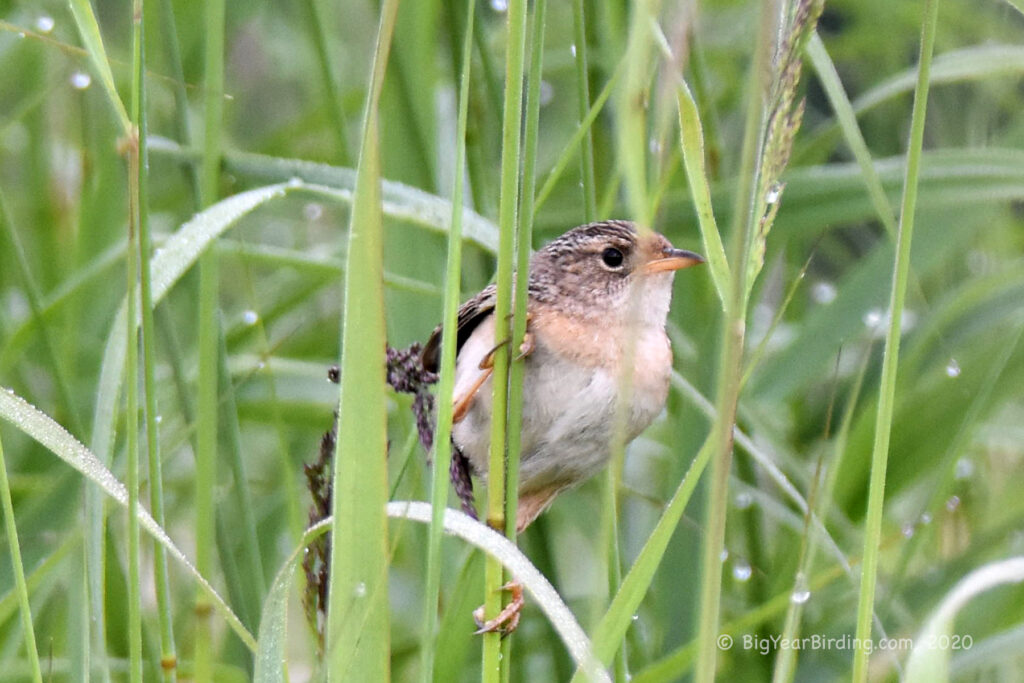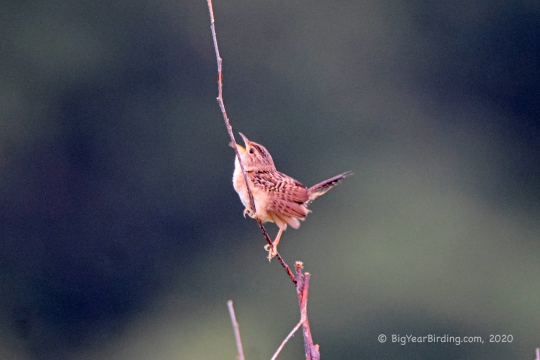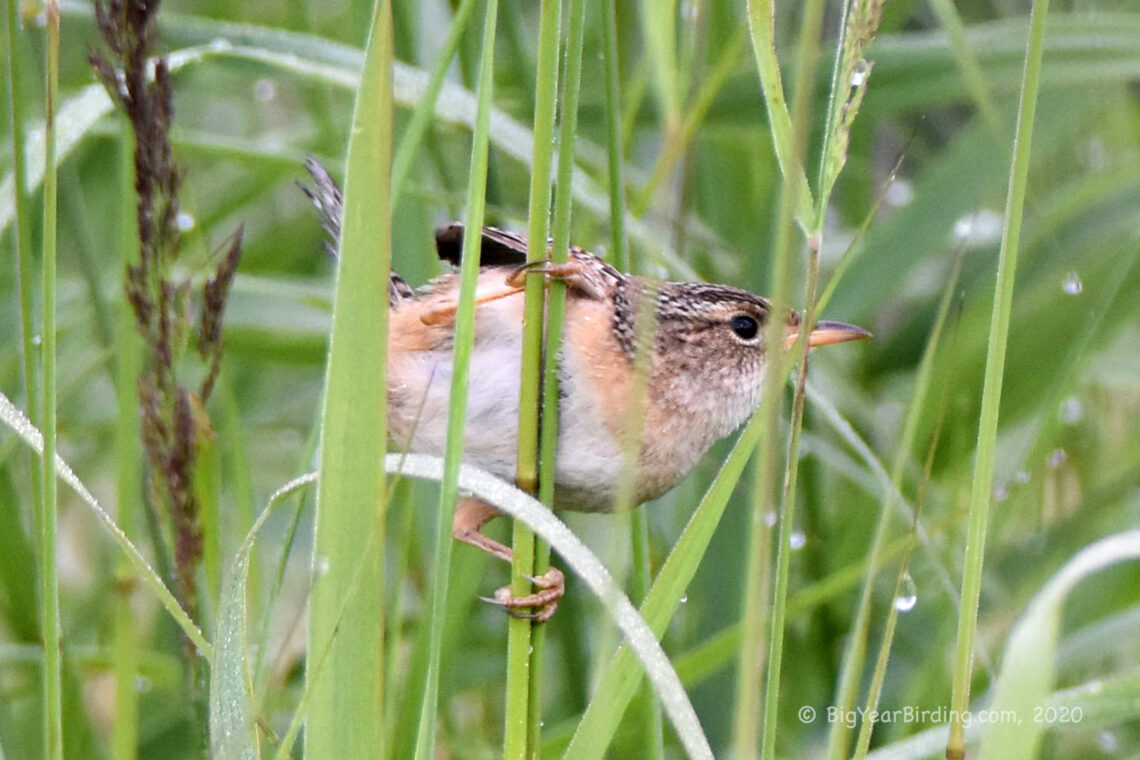The Sedge Wren, scientific name Cistothorus platensis, is a small bird that is commonly found in marshes and wet meadows. This bird is known for its short, plump body and its long, thin tail that it often holds cocked upwards. The Sedge Wren measures approximately 4.5 inches in length and weighs around 0.35 ounces, making it one of the smallest bird species in North America.
One of the most distinctive field marks of the Sedge Wren is its streaked brown plumage, which helps it blend in with its marshy habitat. The underparts of the bird are pale, with a light-colored belly and a white throat. The wings of the Sedge Wren are rounded and have a white patch that is visible when the bird is in flight. The Sedge Wren also has a short, straight bill that is dark in color and a brown crown that is streaked with white.
The Sedge Wren is a migratory bird, breeding in North America and wintering in Central and South America. During the breeding season, the Sedge Wren can be found in marshes and wet meadows throughout much of the United States and Canada. During the winter months, the bird can be found in Central and South America, where it inhabits a variety of wetland habitats, including mangroves, marshes, and swamps.

The Sedge Wren is a solitary bird and is not often seen in flocks. The bird is most active in the early morning and late afternoon, and it feeds on a variety of insects, spiders, and other small invertebrates. The Sedge Wren is known for its clear, sharp call that is often used to defend its territory. The bird’s call is a series of high-pitched, trilled notes that are often described as sounding like “tee-tee-tee”.
In conclusion, the Sedge Wren is a small bird that is known for its distinctive appearance and clear, sharp call. The bird is found in marshes and wet meadows and is recognized by its streaked brown plumage, pale underparts, and short, straight bill. The Sedge Wren is a migratory bird, breeding in North America and wintering in Central and South America. The bird is most active in the early morning and late afternoon, and it feeds on a variety of insects and other small invertebrates.


